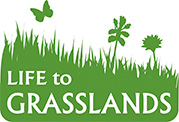Biodiversity is decreasing in Europe. Flooded forests and wet grasslands are disappearing. The man-made environment is changing. Easily accessible areas and those environments that are less interesting from an economic perspective are particularly at risk. Many plant and animal species were thus pushed to the brink of survival. Some of them were even pushed over it, and there is no way back.
In order to stop and turn around the trend of extinction of plant and animal species, the European Union established the Natura 2000 network. With the network of protected areas, the member states of EU are participating in protection of endangered species, no matter the state borders.
What is Natura 2000?
The European Birds Directive was accepted in 1979. Its goal is to protect wild birds and their most important habitats. It also protects migratory birds – not only their nesting grounds, but also their wintering areas and flight paths.
The protection of birds was followed by the protection of other plant and animal species. In 1992, the European Habitats Directive was accepted. It lays down the criteria for the protection of rare, endangered or endemic species of wild animals and plants and habitat types.
The two directives together form the framework of EU nature protection – the Natura 2000 network. With the help of the provisions from both directives, more than 1,000 rare and endangered plant and animal species and 200 habitat types are protected in Europe in their entire natural area.
Slovenia pronounced its first Natura 2000 areas with entrance to the European Union in 2004. Today, there are 354 areas in Slovenia, out of which 323 are defined on the basis of the Habitats Directive and 31 on the basis of the Birds Directive.
In the Natura 2000 network in Slovenia, 114 plant and animal species are protected as well as 60 habitat types. We also protect 119 bird species, defined according to the Birds Directive. Natura 2000 areas cover 37 percent of Slovenian territory, which is the largest percentage in the European Union. Areas defined according to the Habitats Directive often overlap with areas established through the Birds Directive.
Management of Natura 2000 Areas
In order to take full advantage of the Natura 2000 potentials, it is important that all the interested participants are included in management. Natura 2000 does not introduce new systems and practices. The nature in these areas has been largely preserved due to past activities. So today, in most cases the existing practices need to be carried out (farming, forestry) or only small adjustments of the existing activities are necessary if we wish to ensure that the use of land is compatible with the goals of nature preservation.
In some areas, greater measures need to be taken. Here we must adopt changes with which we can prevent further deterioration of life environments or return them to a past favourable state with the help of renaturation.
It is always of key importance that people who live and work in the Natura 2000 regions are participating in decision making about the long-term management of these areas. Land owners, local
communities, governmental authorities, the industry, mountaineers, cyclists and other recreational groups, environmentalists and individual citizens – we all have an important role in the success of Natura 2000 and in preventing the loss of biodiversity. Human is a part of nature. Co-operation between nature and humans is therefore indispensable.
Most areas from the Natura 2000 network are precious due to the manner of their current management. Therefore it is important to ensure that the traditional activities (for example, extensive farming) are also going to take place in the future.
More information also at this link www.natura2000.si
